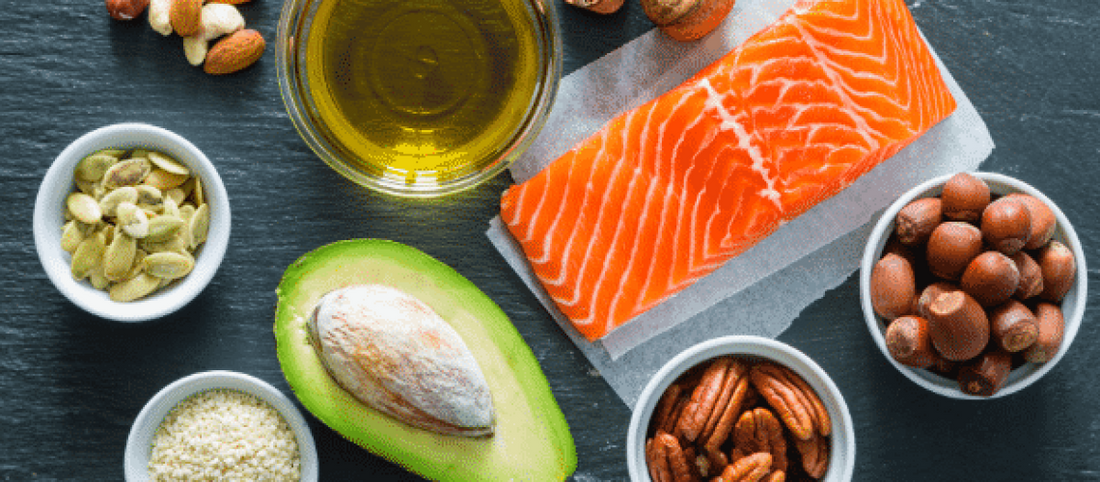With all the conflicting information that has emerged out of research over the past decades, it is quite easy to experience confusion around the true value of dietary fats for our health.
Fat Is Not The Enemy
Dietary fats received a bad reputation in the 1950’s and progressing into the 70’s and 80’s, the message to limit fats grew louder and stronger, as a critical intervention to avert chronic illnesses. The anti-fat campaign, however, had led to a widespread epidemic of metabolic dysfunction, including heart disease, obesity, and diabetes.
It stands to reason that the conventional medical paradigm made a mistake – fats are actually good for you.
Dietary fats are one of the three major macronutrients. Alongside protein and carbohydrates, they are essential for energy production and the structural function of the human body. Fats are important for supporting cognitive function and the nervous system, insulating internal organs, regulating body temperature, and aiding in the absorption of fat-soluble vitamins (A, D, E, and K).
In saying that, not all fats are created equal and so it becomes important to understand the basics of this macronutrient.
What are the different types of fats?
When it comes to fats there are four main classes. These are trans-fats, saturated fats, mono-unsaturated fats, and polyunsaturated fats.
Let’s examine each category in more detail.
🟡 Trans fats
Did you know that trans-fats exist both in natural and artificial forms, with distinguished effects on the body?
Naturally occurring trans-fats are produced by the gut bacteria in the stomachs of grazing animals and are associated with beneficial health outcomes. Conjugated linoleic acids, for example, have been shown to lower the risk of heart disease and improve insulin sensitivity.
Artificial trans fats, on the other hand, exert detrimental effects on health, with increased risk of cancer, heart disease, obesity, and cognitive dysfunction. Artificial trans-fats are found in fried food, hydrogenated vegetable oils, and fast food.
"Artificial trans fats have no role in human physiology and play havoc with your health."
🟡 Saturated fats
Saturated fats are classified into:
- Long-chain saturated fats are the core structural fats, forming 75-80 percent of fatty acids in most cells. They are also the primary storage form of energy. These fats are mostly found in dairy and meat. Prioritising grass-fed and organic sources over conventional options will provide more nutrient-dense dietary support.
- Medium-chain saturated fats, also known as medium-chain triglycerides (MCTs), are primarily found in coconut milk and breast milk, although dairy can also contain MCTs. Interestingly, MCTs do not require bile acids for digestion and this makes them a great source of digestible energy. MCTs are antibacterial and antiviral, they enhance thermogenesis (fat burning) and support brain metabolism..
- Short-chain saturated fats or short-chain fatty acids (SCFAs) are primarily produced as a result of fibre fermentation by the gut bacteria in the colon. SCFAs have important signalling roles and provide a source of energy for the cells in the gut lining.
Due to their chemical structure, saturated fats are solid at room temperature and stable when exposed to high temperatures and light. This makes them more suitable for cooking as they are less likely to oxidise and form harmful trans-fatty acids.
🟡 Unsaturated fats
In contrast to saturated fats, unsaturated fats are susceptible to oxidation when exposed to light, oxygen, and heat. The oxidation process can generate free radicals with potentially toxic effects on the body. When cooking at high temperatures, it is recommended to avoid using these oils and, if possible, store them in dark glass containers to ensure their quality.
Within the unsaturated fat category, there are two types: monounsaturated and polyunsaturated fats.
Monounsaturated fats beneficially influence cardiovascular disease risk markers; they reduce LDL, triglycerides, and blood pressure. Good food sources are olives, avocados, nuts.
Polyunsaturated fats impart structural and regulatory benefits, supporting cell membrane integrity, regulating gene expression, and aiding cellular metabolism. Specifically in the brain, they are anti-inflammatory and enhance neurotransmission and neuroplasticity.
There are 2 main types of polyunsaturated fats: omega-3 and omega-6. These are considered essential, which means they must be obtained from the diet (the body does not make them).
Omega-3 sources: Seafood: cod, herring, salmon, sardines, chia seeds, walnuts, flaxseeds.
Omega-6 sources: nuts and seeds: pumpkin, sunflower seeds and walnuts, meat, eggs, and dairy products.
Dietary fats are diverse, complex, and absolutely essential for our health. However, like anything in the nutrition world, the types of fat and the amount you can consume will also depend on your physiology and current health needs. You need to find what works for you.
Appendix: List of fats to consume and fats to avoid to help guide your choices.
| Fats to include | Fats to avoid |
| Organic extra virgin olive oil | Soybean oil |
| avocado oil | Canola oil |
| Grass fed butter and ghee | Vegetable oil |
| Olives | Corn oil |
| Tahini | Safflower oil |
| Avocados, olives | Sunflower oil |
| Nuts and seeds | Vegetable shortening |
| Coconut or MCT oil | Peanut oil |
| Hemp seed oil | Margarine and ‘butter’ substitutes |
| Flaxseed oil ( requires refrigeration) | Anything ‘hydrogenated’ |
.
.
.
.
.
REFERENCES
- Malhotra A. Saturated Fat is Not the Major Issue. BMJ 2013;347:f6340
- Groppler SR, et al. 2009, Advanced nutrition and human metabolism, Wadswoth Cengage Learning, Australia
- Omega-3 Fatty Acids; Fact Sheet for Health Professionals. National Institute of Health.
- https://diabetesjournals.org/diabetes/article/50/5/1149/11374/Isomer-Specific-Antidiabetic-Properties-of
- https://pubmed.ncbi.nlm.nih.gov/22648724/
- www.sciencedirect.com/science/article/abs/pii/S000282230902094X
- https://pubmed.ncbi.nlm.nih.gov/27215959/
- https://www.liebertpub.com/doi/abs/10.1089/jmf.2012.0303?casa_token=gzYAsBRoUOUAAAAA%3A5X4cZmDHBZVxHMRTHbTvB3GdjUEyuX0s_LZfGNPrlnwKqtV3wMgFmoz5EgjEMp5HqmtawGb-0ZxxGFTy
- https://www.metabolismjournal.com/article/0026-0495(66)90046-1/fulltext
- .https://gut.bmj.com/content/35/1_Suppl/S35
- https://link.springer.com/article/10.1023/B:EJEP.0000013351.60227.7b?noAccess=true
